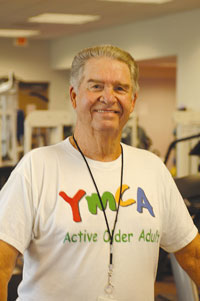By YMCA

Successful marketing or programming for older adults begins with understanding “where they are coming from” so that we can best engage them in on-going physical activity. For most in this age group, healthy living, maintaining their independence, playing with grandchildren, and having a basic level of functional fitness is their overall goal (while only a small percentage regularly compete in sports or running races).
Older adults are not all the same, but there are common roles that many of them take on in their everyday lives: caregiver, empty nester, grandparent, breadwinner, retiree, widow/widower, etc. How does your P.A. programming take into account all of these possible roles? Empty nesters may be re-engaging in P.A. after years of doing “not much,” and are looking to join others who look and move “just like them”. Widow/widowers may be looking for clubs and events that not only meet their physical activity goals, but help them build a network or community of peers. Grandparents may be attracted to activities and programs that they can actively do with their grandkids.
Older adults don’t want to buy more “stuff,” but they will spend money on “experiences”. The “bucket list” even if it isn’t written down, isn’t about stuff, it’s about trying new things, visiting more places, meeting interesting people. Does your your marketing or programming emphasis “stuff” like treadmills or balance balls, or “experiences” like working out with new friends and spending quality time with family? Creating significant physical and emotional experiences via physical activity can solidify a commitment to lifelong healthy lifestyles. Older Adult Camps, fossil hunting trips, foreign travel, ethnic cooking classes, financial well-being and living workshops, “Meet the Author” book sessions, can all create these significant experiences.
The way older adults keep score of their physical activity changes over time. An exercise session might not be judged on how many reps, how much weight, or how long the session lasted. A jog in the park might be more about seeing birds, flowers, and having a casual conversation with your jogging buddy, instead of how far or how fast they ran. Have you created any new ways to help Older Adults keep score of their physical activity?
Many have already had a significant health issue (cancer, heart attack, pre-diabetes, etc.) in their life. Some are committed to prevention; some need extra motivation, education, variety and support to get regular physical activity. Some readily admit these health issues directly; others may be embarrassed to let others know. How have you (or your staff) prepared to respond appropriately when a potential member or client reveals they are a cancer survivor, have had a hip replaced, or have limited vision?
The older adult population needs physical activity as much as any group, and the more we can respond to their unique needs, interests, and motivators, the more likely we’ll engage them in meeting the P.A. guidelines. What have you learned about working with older adults that you would like to share?